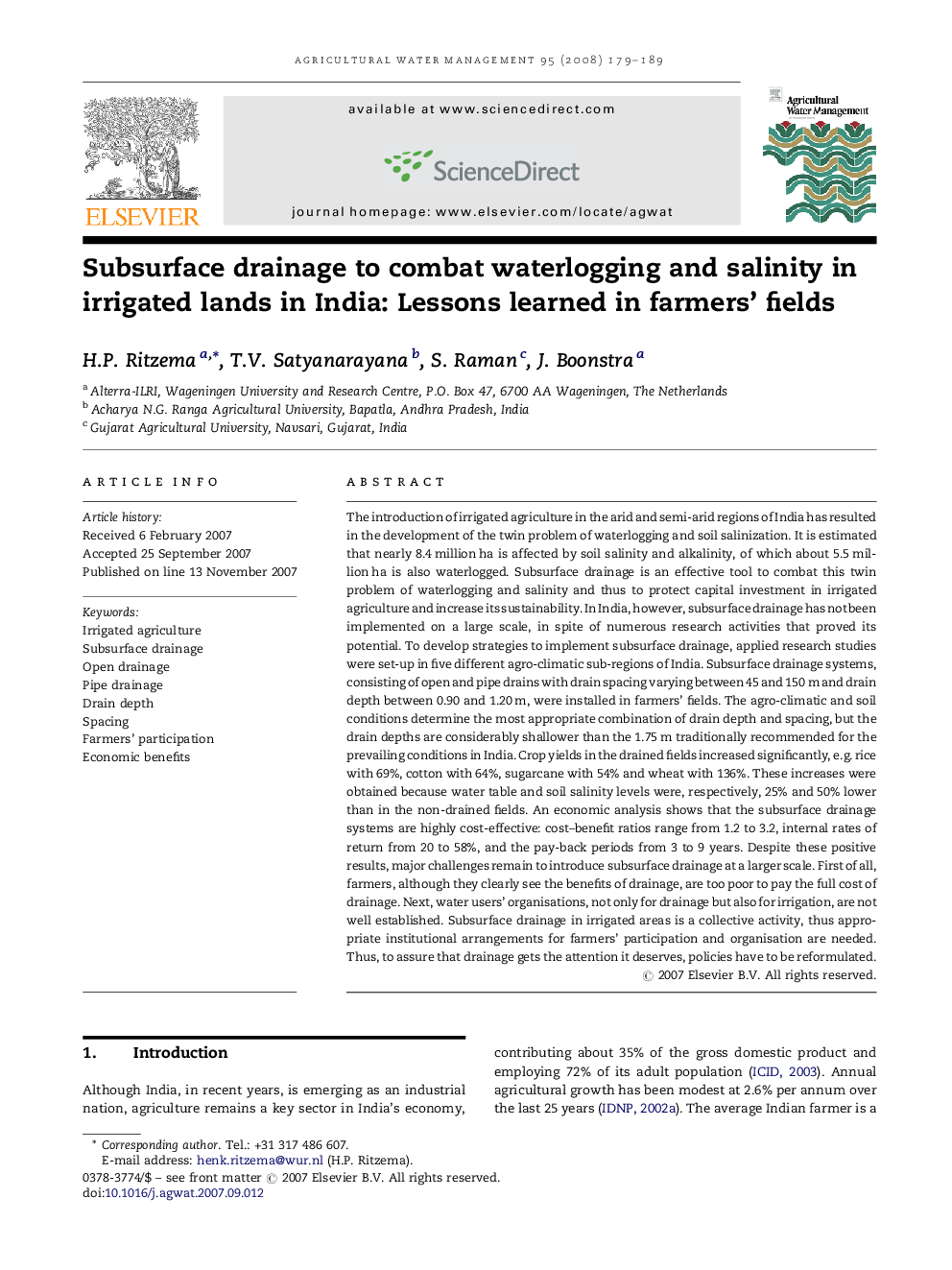| Article ID | Journal | Published Year | Pages | File Type |
|---|---|---|---|---|
| 4480265 | Agricultural Water Management | 2008 | 11 Pages |
The introduction of irrigated agriculture in the arid and semi-arid regions of India has resulted in the development of the twin problem of waterlogging and soil salinization. It is estimated that nearly 8.4 million ha is affected by soil salinity and alkalinity, of which about 5.5 million ha is also waterlogged. Subsurface drainage is an effective tool to combat this twin problem of waterlogging and salinity and thus to protect capital investment in irrigated agriculture and increase its sustainability. In India, however, subsurface drainage has not been implemented on a large scale, in spite of numerous research activities that proved its potential. To develop strategies to implement subsurface drainage, applied research studies were set-up in five different agro-climatic sub-regions of India. Subsurface drainage systems, consisting of open and pipe drains with drain spacing varying between 45 and 150 m and drain depth between 0.90 and 1.20 m, were installed in farmers’ fields. The agro-climatic and soil conditions determine the most appropriate combination of drain depth and spacing, but the drain depths are considerably shallower than the 1.75 m traditionally recommended for the prevailing conditions in India. Crop yields in the drained fields increased significantly, e.g. rice with 69%, cotton with 64%, sugarcane with 54% and wheat with 136%. These increases were obtained because water table and soil salinity levels were, respectively, 25% and 50% lower than in the non-drained fields. An economic analysis shows that the subsurface drainage systems are highly cost-effective: cost–benefit ratios range from 1.2 to 3.2, internal rates of return from 20 to 58%, and the pay-back periods from 3 to 9 years. Despite these positive results, major challenges remain to introduce subsurface drainage at a larger scale. First of all, farmers, although they clearly see the benefits of drainage, are too poor to pay the full cost of drainage. Next, water users’ organisations, not only for drainage but also for irrigation, are not well established. Subsurface drainage in irrigated areas is a collective activity, thus appropriate institutional arrangements for farmers’ participation and organisation are needed. Thus, to assure that drainage gets the attention it deserves, policies have to be reformulated.
